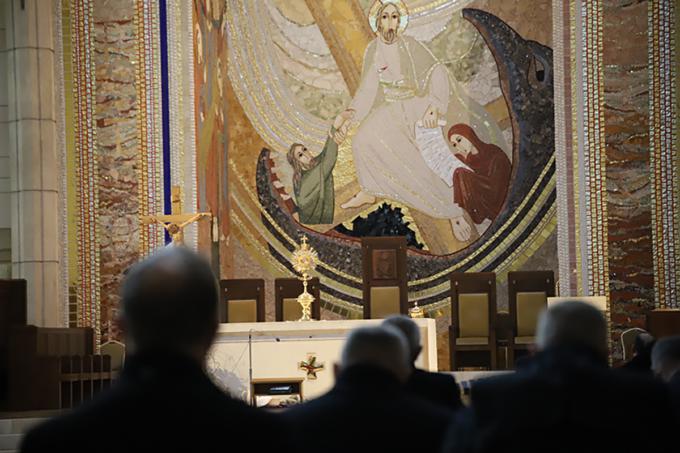
Spirituality
Currently, there is a debate going on around the world -- what to do with Rupnik's prolific mosaics.

Caldarola
If you're looking for a creepy, unsettling thriller to stream, "Ripley" fills the bill.
Based on Patricia Highsmith's 1955 novel, "The Talented Mr. Ripley," the edgy film starring Andrew Scott is shot mostly in Italy against magnificent views of Rome, Naples and the Italian coast.
Ripley has been hired by a wealthy American to go to Italy and persuade his son, who is living a luxurious trust fund life, to return home. Ripley is a grifter and a con man, but the father doesn't realize that yet. Bad things follow.
But this is not a movie review. No, it's some thoughts I had while watching the series. Thoughts about artists and their work. And the current debate about what to do with the prolific work of the former Jesuit, Father Marko Rupnik, a famous mosaic artist who has been credibly accused of abusing between 20 to 40 women.
For some reason, Ripley is enthralled by the work of the great Italian painter, Caravaggio, who was born in 1571.
Caravaggio's works are in churches all over Italy, including the Vatican. His realism, his dramatic use of light and dark, changed the art world.
On retreat once, a priest suggested I look at "The Calling of St. Matthew" to pray about my own calling by Christ. Caravaggio used a real tax collector as a model for Matthew, sitting at the table with his money. Christ, illuminated in the doorway, points a finger at Matthew.
The painting is unforgettable, and I gasped when Ripley sees it, too.
But Caravaggio had extensive trial and police records -- a long rap sheet. He was a violent man who may have suffered from a form of schizophrenia. It is said that in 1606 he murdered a man in a street fight and spent the last four years of his life on the run. In 1609, he was wounded in a knife attack in Naples, and died not long after.
Does it matter to our appreciation of his art that Caravaggio was a murderer?
Currently, there is a debate going on around the world -- what to do with Rupnik's prolific mosaics. They appear at Lourdes and the Sanctuary of St. John Paul II in Poland. As noted in a recent OSV News report, the Sanctuary of Our Lady of Aparecida, the second largest church in the world after St. Peter's Basilica, has had extensive mosaics completed recently by Father Rupnik.
If the art is beautiful and inspiring, should we consider the artist?
Perhaps not. But in Rupnik's case, we must consider the victims.
The alleged victims were all vulnerable adult women, some involved with the priest through the Loyola Community, which he helped found, and often through their work with his art. One victim used words like "psychological torture" to describe how he would manipulate and control them sexually while enlisting their aid in his mosaics. Often, she reports, he would use religious themes, like the Trinity, to involve them sexually.
He was excommunicated once for granting absolution in the sacrament of reconciliation to someone with whom he had sex.
Yet here we are, wondering if we should remove mosaics. In a church often criticized for emphasizing sexual sins over other wrongs, we spent decades covering up sexual sins if they involved clergy. Have we learned nothing?
And those words I used to describe "Ripley"? Creepy and unsettling. Those are words I feel now when I look at Rupnik's mosaics and think of female involvement.
Caravaggio's victims are long gone. But living, breathing women whose lives have been drastically impacted by Rupnik live on. It's time to honor them.
- Effie Caldarola is a columnist with the Catholic News Service.
Recent articles in the Spirituality section
-
Masters week foreknowledgeMichael Pakaluk
-
Why is Lent 40 days?Michael Pakaluk
-
The eloquent ambiguity of 'I believe'Bishop Robert Barron
-
You don't get what you pay forMichael Pakaluk
-
The witness of a consecrated lifeBishop Robert Barron























